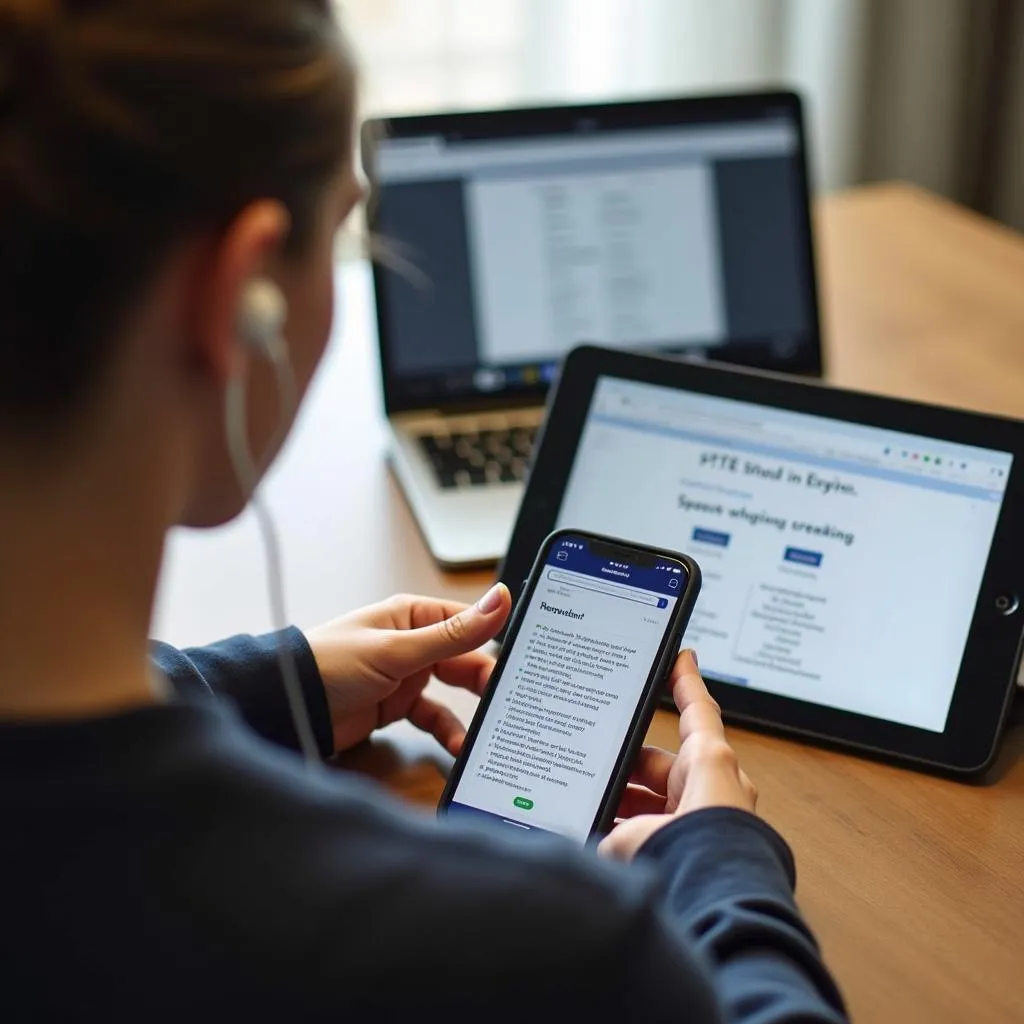Mastering the PTE Speaking section requires more than just good English skills. It demands fluency, confidence, and the ability to think on your feet. This comprehensive guide will walk you through proven strategies to enhance your fluency and ace the PTE Speaking tasks.
Understanding Fluency in PTE Speaking
Fluency in the PTE Speaking section goes beyond just speaking quickly. It’s about maintaining a smooth, natural flow of speech without excessive pauses or hesitations. The key is to sound confident and articulate while accurately conveying your thoughts.
Why Fluency Matters in PTE Speaking
Fluency directly impacts your score in the PTE Speaking tasks. The Pearson scoring algorithm evaluates not just what you say, but how you say it. A fluent speaker is more likely to achieve higher scores in areas such as:
- Oral Fluency
- Pronunciation
- Content
- Overall communicative effectiveness
PTE practice test scoring guide provides detailed insights into how these aspects are evaluated.
Strategies to Improve Fluency for PTE Speaking
- Regular Speaking Practice
- Shadowing Technique
- Expanding Vocabulary
- Mastering Transition Words
- Practicing Under Pressure
Let’s dive deeper into each of these strategies.
1. Regular Speaking Practice
Consistency is key when it comes to improving fluency. Set aside at least 30 minutes each day for dedicated speaking practice. Here’s how to make the most of your practice sessions:
- Record yourself speaking on various topics
- Listen to your recordings and identify areas for improvement
- Practice with a study partner or language exchange app
- Participate in English-speaking clubs or online forums
 Student practicing PTE speaking tasks
Student practicing PTE speaking tasks
2. Shadowing Technique
Shadowing is an effective method to improve both fluency and pronunciation. Here’s how to do it:
- Choose a short audio clip (1-2 minutes) of a native English speaker
- Listen to the clip once to understand the content
- Play the clip again, this time repeating what you hear immediately after the speaker
- Focus on matching the speaker’s pace, intonation, and pronunciation
As Dr. Sarah Thompson, a renowned PTE coach, explains: “Shadowing helps train your brain to process and produce English sounds more quickly and naturally, which is crucial for PTE Speaking tasks.”
3. Expanding Vocabulary
A rich vocabulary allows you to express ideas more fluently without searching for words. To expand your vocabulary effectively:
- Learn new words in context rather than in isolation
- Focus on academic and formal vocabulary relevant to PTE topics
- Use newly learned words in your daily conversations and writing
- Create mind maps or word association diagrams
How to expand vocabulary for PTE exam offers more in-depth strategies for vocabulary enhancement.
4. Mastering Transition Words
Transition words and phrases help create a smooth flow between ideas, enhancing your overall fluency. Some useful transition words for PTE Speaking include:
- Furthermore
- However
- On the other hand
- In addition
- Consequently
Practice incorporating these words into your responses during mock PTE Speaking tasks.
5. Practicing Under Pressure
The PTE Speaking section can be stressful, which may affect your fluency. To combat this:
- Set time limits for your practice sessions to simulate exam conditions
- Use a timer during mock tests
- Practice in different environments to adapt to potential distractions
How to practice PTE speaking under pressure provides valuable insights on maintaining composure during the exam.
 Student practicing PTE speaking with timer
Student practicing PTE speaking with timer
Advanced Techniques for PTE Speaking Fluency
Mouth Exercises for Clear Articulation
Improving your articulation can significantly enhance your fluency. Try these exercises daily:
- Tongue twisters: Start with simple ones and gradually increase difficulty
- Lip and jaw relaxation exercises
- Vocal warm-ups, such as humming or singing scales
Breath Control for Sustained Speech
Proper breath control is essential for maintaining fluency, especially in longer speaking tasks. Practice these techniques:
- Diaphragmatic breathing: Focus on breathing from your abdomen rather than your chest
- Breath support exercises: Practice speaking on a single breath for as long as possible
- Pausing strategically: Learn to pause naturally at logical points in your speech
PTE expert John Davis advises, “Mastering breath control not only improves fluency but also helps manage stress during the exam, leading to better overall performance.”
Thinking in English
To truly enhance your fluency, aim to think in English rather than translating from your native language. Here’s how:
- Narrate your daily activities in English in your mind
- Keep an English journal to process your thoughts in writing
- Practice mental conversations in English
Common Pitfalls to Avoid in PTE Speaking
- Overuse of filler words (um, uh, like)
- Speaking too quickly at the expense of clarity
- Focusing on perfection rather than communication
- Neglecting proper stress and intonation
PTE exam section-wise breakdown and tips offers more insights on avoiding these common mistakes.
Leveraging Technology for Fluency Practice
Take advantage of technology to enhance your PTE Speaking practice:
- Use speech recognition software to improve pronunciation
- Engage with AI-powered language learning apps
- Participate in online language exchange platforms
- Utilize PTE-specific practice apps and websites
PTE online practice test benefits highlights how technology can significantly boost your preparation efforts.
 Student using technology for PTE speaking practice
Student using technology for PTE speaking practice
Conclusion
Building fluency for the PTE Speaking section is a journey that requires dedication, consistent practice, and the right strategies. By implementing the techniques discussed in this guide, you’ll be well on your way to achieving a smooth, natural flow of speech that impresses PTE examiners. Remember, fluency is not about perfection, but about effective communication. Keep practicing, stay confident, and watch your PTE Speaking scores soar!
FAQ
How long does it typically take to improve fluency for PTE Speaking?
Improvement timelines vary, but with consistent daily practice, most students see noticeable progress in 4-6 weeks.
Can I improve my fluency by watching English movies and TV shows?
Yes, passive listening helps, but active engagement like shadowing or discussing the content is more effective for fluency improvement.
How important is accent for PTE Speaking fluency?
Accent is less important than clarity and overall communicative effectiveness. Focus on clear pronunciation rather than mimicking a specific accent.
Should I memorize responses for PTE Speaking tasks?
It’s better to understand question types and practice formulating responses quickly rather than memorizing set answers, which can hinder natural fluency.
How can I overcome nervousness during PTE Speaking tasks?
Regular practice under exam-like conditions, deep breathing techniques, and positive self-talk can help manage nervousness and improve fluency.
Is it better to speak slowly and clearly or quickly and fluently in PTE Speaking?
Aim for a balance – speak at a natural pace that allows for clear articulation. Fluency doesn’t mean speaking as fast as possible.